Tbilisi SPP #8 Field Notes
May 29th, 2025, Varketili Central Park, Tbilisi, Georgia
Duration: 2 hours, 15 mins, 4p to 6:15p from meeting place, warmup, and end.
Players: 7 performers, 2 camera persons (2 performers were also camera persons)
Gina (HU)
Rita Soma (ES),
Rita Magritte (RU)
Alina Dolzhenko (RU)
Tanya (RU)
Tayna (RU)
Adam Koan (USA)
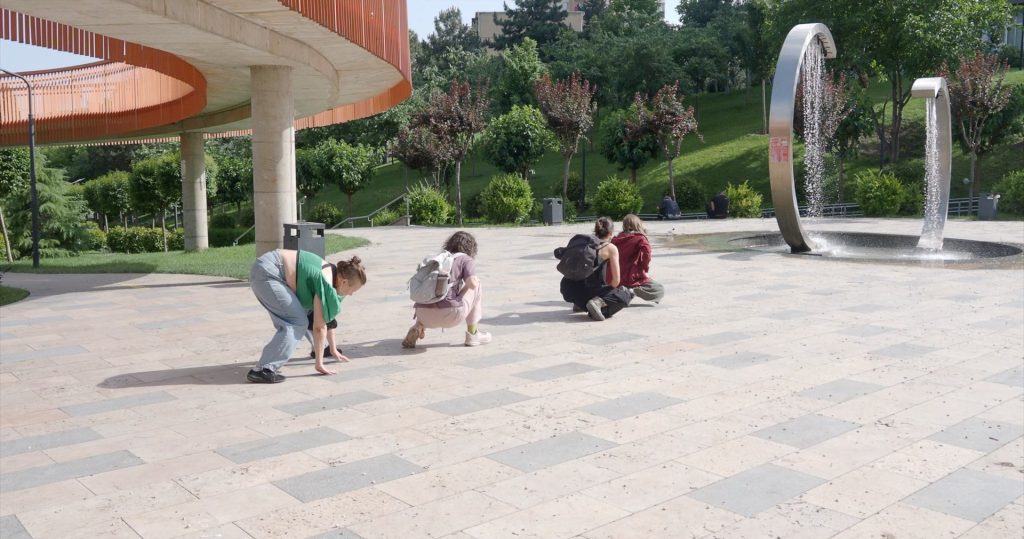
The 8th Spontaneous Performance Procession (SPP) in Tbilisi came with several surprises and provoked further analysis for future participation.
The SPP is a happening where dancers process around a given terrain for a set time and break out into mini body-based performances based on site-specific resonance. For detailed info on the SPP, see here.
For this SPP, we chose to engage with Varketili Central Park, 1km from the last southbound metro station Varketili.
Each SPP has revealed new dimensions, but what set this one apart was something we hadn’t experienced before: for nearly the entire duration—about two hours—we were followed by an audience of kids and teenagers of various ages.
Compared to the previous SPP, the crowd this time was louder and somewhat intrusive. While this led to several spontaneous invitations for public interaction, it also reinforced the need to stay focused on the work itself.
On a more general note, when pondering the nature of the SPP, beyond dance, theatre, and performance art, the SPP can also serve as a form of psychogeographic exploration and experimental study. Not only that, but it also aligns with the concept of the pervasive or ubiquitous game—such as certain urban theatre games or live-action roleplays (LARPs)—intentionally blurring the boundaries between art, game, and everyday life, typically non-competitive, as is the case with the SPP.

Uncategorized = Unwelcome (But Not For The Youth)
It was a fascinating phenomenon to be followed for two hours by a crowd composed entirely of children and teenagers. And what an audience they were. Yes, they were loud, at times even intrusive, but there’s something to be said for an audience that’s alive and engaged. Compared to the zombie stillness of traditional theatergoers, these young followers brought energy and unpredictability to the happening.
Because the activity was relatable to them, we found ourselves, perhaps unexpectedly, within their mental terrain. At times, their interactions suggested they were trying to guide or even expand the play themselves. They are, after all, connoisseurs of play. In one instance, Tayna broke out into a solo performance, and 2 children incorporated weeds they had gathered, creating a moment resembling a performance art action with encouraged audience-participation.

There were adults around of course, but none expressed interest in having any part in this uncategorized assembly. At most, an adult’s expression might have briefly cracked a Mona Lisa smile—but more commonly, the default was either a disapproving stone-faced stare or a determined effort to pretend nothing was happening at all.
When kids and teenagers were clearly gleefully engaged, did it create a kind of cognitive dissonance in the adults? Could it have raised the question, even for a fleeting moment, the realization that they might have forgotten how to truly live? That they’ve stifled their sense of wonder and buried their youthful spirit altogether?
As adults, are we meant to be this dead—only allowed to “play” within the socially accepted bounds of a football match, concert, or a night of drinking?
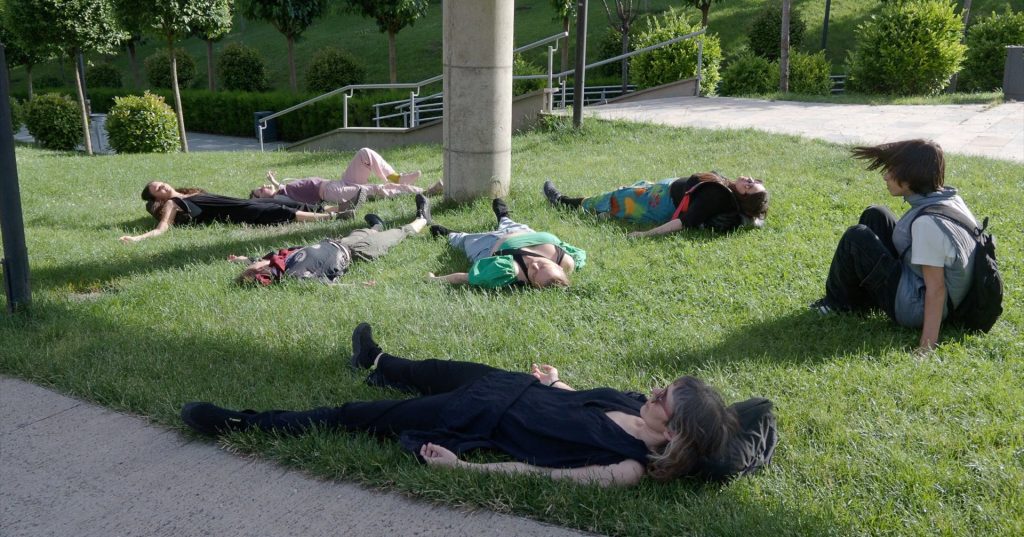
Uncategorized = Unholy (For Some Adults)
What’s even more troubling is how anything that doesn’t fit neatly into familiar categories can quickly be branded as cult-like or demonic. At one point, a man approached from a distance, making a gesture of the cross as he rebuked what was taking place.
A clip taken by a stranger from SPP #6 which had actual costumes and face paint, reached over a thousand shares on Instagram. Many commenters labeled it as cultish or demonic, yet the footage itself was perhaps as frightening as a pack of stray puppies? Having, in my day, watched plenty of horror movies, I saw only a harmless procession with playful, abstract movement.

It’s troubling that simply moving together as a group—outside of political rallies or traditional religious ceremonies—prompts some to immediately condemn it as evil.
As a Christian myself (non-denominational), I find this deeply puzzling. It highlights how culture and even church culture (churchianity) can often drain the life out of everything. Nowhere in the Gospels are we told to live like lifeless zombies; on the contrary, the message encourages vitality and childlike openness (and of course, we don’t have to sin to live in vitality). Jesus himself says in Matthew 18:3, “Truly I tell you, unless you change and become like little children, you will never enter the kingdom of heaven.”
Notes for Development
As a kind of post-performance ritual, those of us who participated typically gather at a café or restaurant to reflect on the experience. This time, however, we chose to focus the conversation on areas of growth and potential improvements for future SPPs, drawing from what we had just encountered.
As noted in the field notes for SPP #7, maintaining the structure of the SPP is crucial for establishing a coherent through line and grounding the overall experience. Although there were clear distinctions between the procession and breakout performances, that clarity sometimes broke.
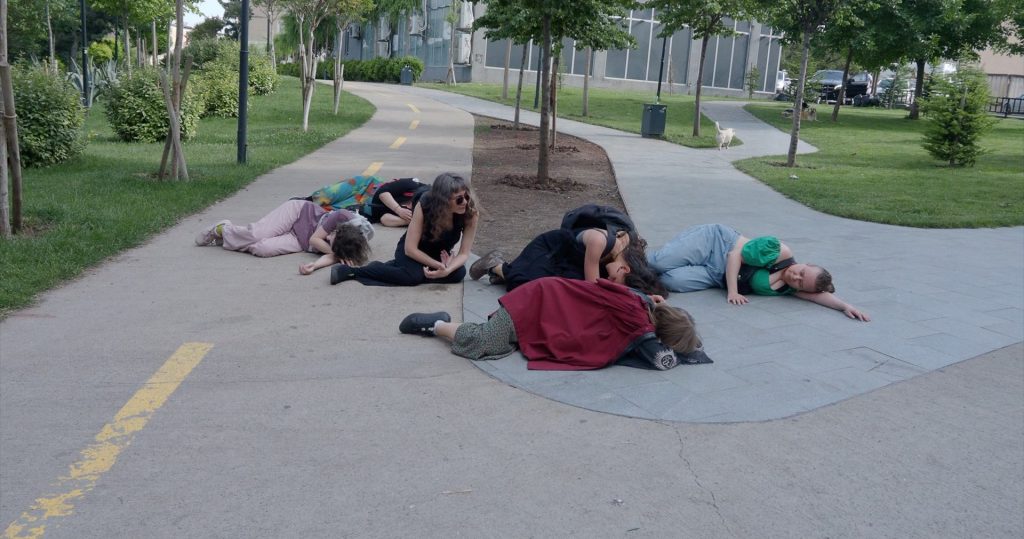
Note 1: Leaders Are Not to Pause, At Least Not For Long
One key observation concerned the role of the leader: within the SPP framework, we can now say that the leader should only pause in response to an actual breakout moment. Otherwise, any unprompted halt disrupts the procession’s momentum, and also undermines the intent behind breakout performances.
To elaborate, when the leader halts and begins performing, it can create a dynamic where all participants are seemingly forced to join in, turning an individual decision into an obligation. Breakout performances are more meaningful when clearly signaled, allowing others the choice to engage—whether as a duet or group—rather than being swept into collective action by default.
If for effect, there is a deep resonance calling for a pause, then it is recommend to not go over 15 seconds.
Note 2: The Procession’s Performativity & Pacing
If the leader cannot pause, this may raise the question of performativity and pacing of the procession itself.
While the procession is inherently performative, that doesn’t mean participants are always dancing or actively engaged in visible expression. At times, it settles into a neutral walk. This neutral walk shouldn’t be underestimated—it serves as a kind of silence and pacing, offering a necessary contrast. Just as all art needs its moments of stillness or quiet, the procession remains a part of the overall flow. The silence here is not an absence, but a quiet continuation.
Note 3: Leader Handing Over Leadership
If the leader no longer feels aligned with the role, a quick transition can be made by tagging in the person directly behind them via a high five. This allows for a smooth handoff of leadership.
Alternatively, if anyone in the group senses the need for a shift in direction, a new leader can step in by moving to the front—similar to the improvisational dance exercise known as flocking.
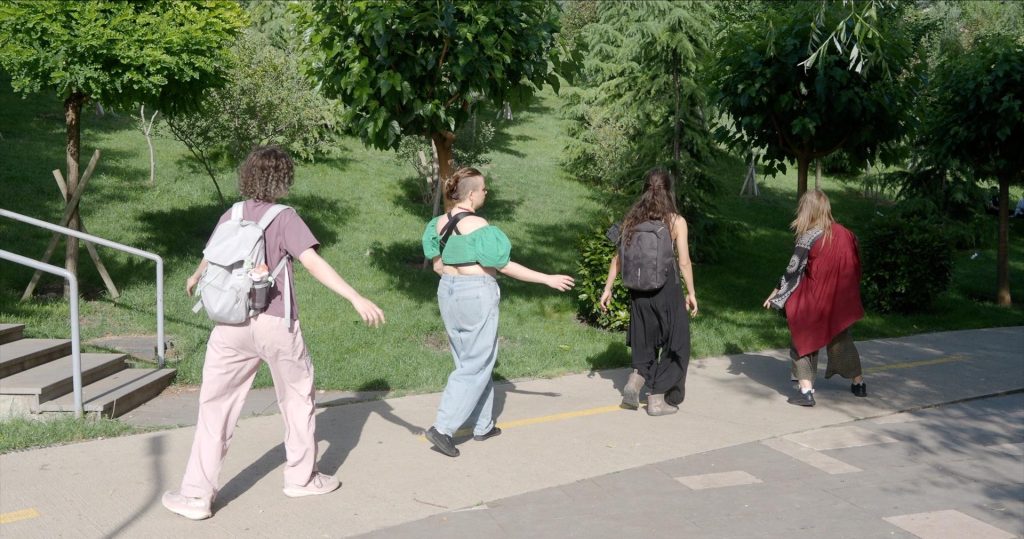
Note 4: Ending Clap
A player gave a clap to signal the end of a performance—an action that could be incorporated into the SPP structure. Much like a film director uses “Action!” to begin and “Cut!” to end a scene, this gesture could serve as a clear marker for the conclusion of a breakout moment.
Note 5: QR Code
Since the kids were asking for an Instagram, we might consider creating a QR code in the future—perhaps on a sticker, bracelet, or pin—that links directly to a page explaining the procession in simple, accessible terms.
Note 6: Procession Formations Behind the Leader
Because the leader cannot see what is behind them, any procession formations (such as forms that break from the typical line), can be engaged with as a group behind the leader.
Note 7: 33/33/33
Expanding on the 50/50 concept—which refers to maintaining equal resonance between one’s internal experience and the external surroundings—we can take it a step further with the idea of 33/33/33. This approach distributes awareness and resonance equally among three elements: the self, the group, and the broader external environment.
Note 8: Camera People as Horse’s Tail
Any participant carrying a camera—if assuming a dual role of both documenting and occasionally engaging in the procession—should remain at the rear of the group. This positioning allows them to step out as needed to capture significant moments with minimal disruption to the flow and cohesion of the procession.
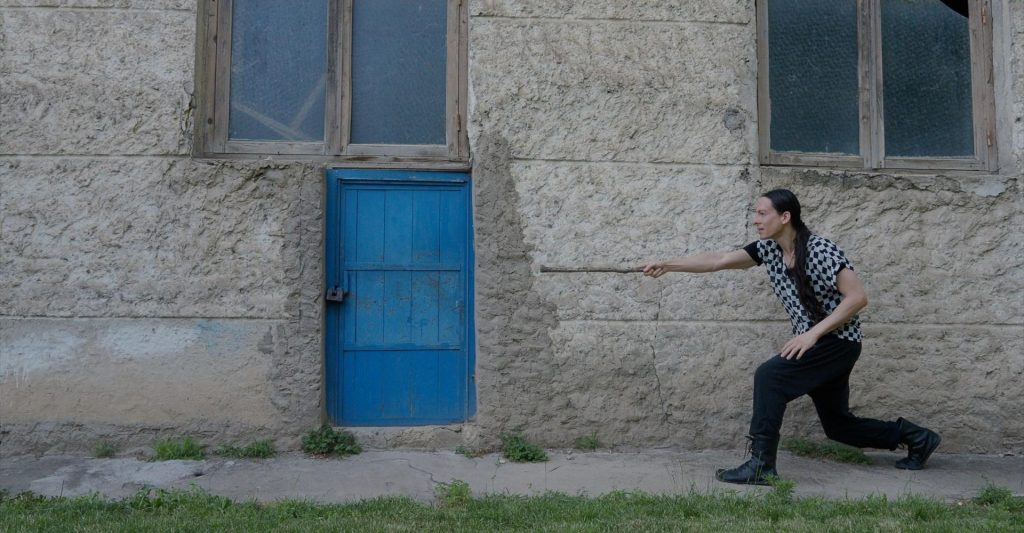
Encouragement to Continue
None of the SPPs held so far—in Georgia, Turkey, Spain, or India—have ever felt dull or lacking in value. On the contrary, it was the invigorating spark of the very first SPP in early 2022 that fueled the momentum to keep them going. That initial spark continues to ignite anticipation and excitement about how these processions will evolve and uncover new discoveries within dance, theatre, live art, psychogeography, and cultural criticism.